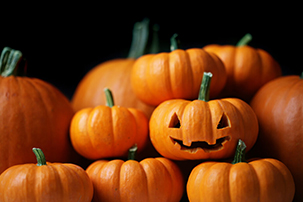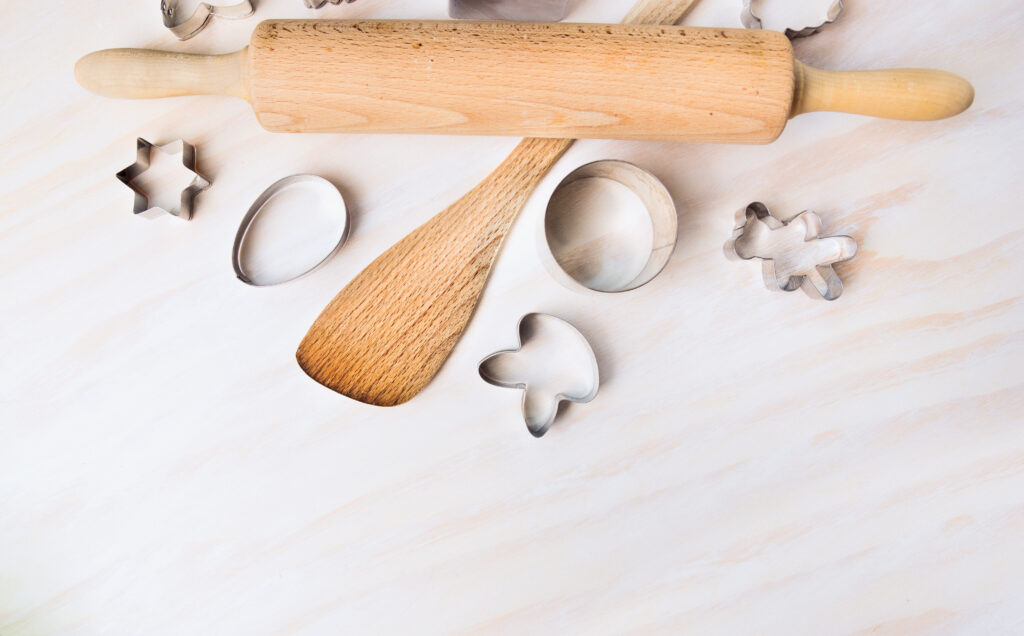

Look no further. You have found the ultimate guide for all things holiday cookie cutters.
No holiday is complete without a fun cookie baking session with family and friends. Or possibly a late night solo baking session-this is one of my favorite ways to zen out during a busy holiday season.
Whenever and however you do it-you will certainly need some festive cookie cutters. There are no shortage of options out there. How do you choose which is best for you? How do you care for the ones you have?
We’ve got the answers to all your cookie cutter questions, pros and cons, and even some fun facts!
Frequently Asked Questions
What are the best cookie cutters?
This all depends on your goal. Do you need a detailed cookie? Do you need one that is easy for kids to use? Are you looking for something easy to clean? Are you looking for a cutter to use as decor? See the Pros and Cons for Every Cookie Cutter Type section below.
Which cookie cutter shape is most popular?
This all depends on who you ask. Some will say it is the often attributed original cutter, the gingerbread man. Others say the most popular shape is one that can be used for multiple holidays or events such as hearts, stars, animals, and letters and numbers. Others will insist the most popular shapes are those associated with the Christmas holiday as baking cookies for Santa has become an integral part of the celebration for many.
Can you use cookie cutters after baking?
Yes! Sometimes this is an even better way to get a precise shape. I love to do this with chocolate chip, oatmeal and rice crispy treats.
- I use a large sheet pan (one with a raised edge) and add all the batter into one large pan shaped cookie.
- Bake carefully and make sure the center is done.
- Allow the cookie to cool slightly before cutting for the best and most crisp shapes.
- Caution-if you wait too long, the cookie may become too hard and not take shape as easily. It’s a balance and will depend on the dough you choose as well.
What can I use instead of a cookie cutter?
Different size cups for a variety of circle shapes (bar glasses work great for this-think wine, champagne, margarita or anything with a thin rim)
- Stack three different sizes together for unique snowmen
- Cut a large circle, then use a smaller glass to cut a circle out of the middle. Voila- a wreath!
Bottom of a cheese grater for a rectangle shape (letters or envelopes for Santa anyone?)
Lids (think tupperware or cups)
Aluminum Foil can be manipulated into many shapes for a one-time use option when you’re in a pinch.
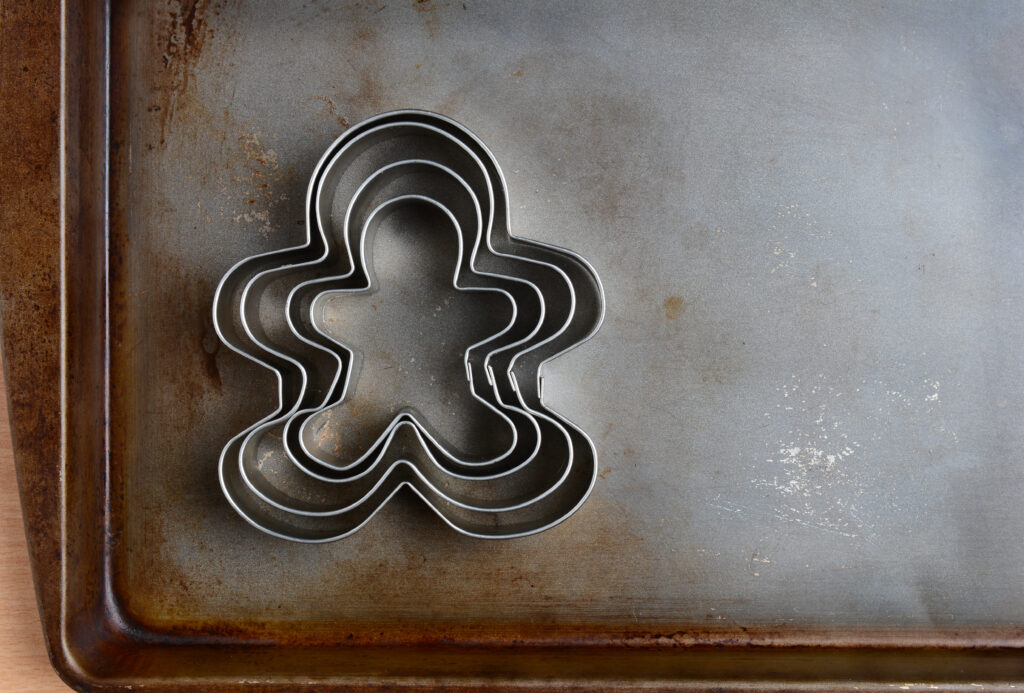

What is a good cookie cutter size?
Standard sizes for most brands are as follows:
- Regular- 3 inches
- Mini-2 inches
- Large-4 inches
Are old cookie cutters safe?
- In our opinion, NO. There are too many unknowns when it comes to antique cookie cutters.
- If the cutter is made from tin, avoid use as many were soldered (connected or put together) with lead based products. There is no level of safe exposure to lead. Do not use them.
- Avoid using cutters with visible rusting or tarnishing.
- Older or vintage cookie cutters are best used as décor or display items.
How do I keep cookie cutters from rusting?
- Make sure they are clean and dry.
- Give them a little dip in some cornstarch.
- Leave some remaining on the cutters to absorb excess moisture they might encounter in storage (i.e. if your air conditioner goes out for a few days like mine did last year-ugh! Or if you live in a humid climate).
- When you are ready to use them again, give them a quick wipe down to remove any remaining cornstarch.
Can I remove rust from metal cookie cutters?
Yes (but again we do not recommend using them for cooking-only display) and there are a few options:
- Water, baking soda and a scrub pad or sponge made of fine steel wool. You add the elbow grease!
- Water and distilled white vinegar. Mix ¾ parts water to ¼ part distilled white vinegar and let the cutters soak for a few hours. Buff with fine steel wool sponge or pad.
In cases of bad rust you may want to consider moving on to a new set of cutters in stainless steal or plastic for a more low maintenance option. Again, we do not recommend cooking with cookie cutters that have rusted. These instructions are for cleaning cutters for display purposes only.
Can cookie cutters go in the dishwasher?
Yes for some and no for others.
- See the manufacturer’s instructions or original packaging.
- Most plastic cookie cutters can be safely washed on the top rack.
- Other cutters can be washed by hand. See the question below.
How do you sanitize cookie cutters?


Certain types of cookie cutters are dishwasher safe. See the manufacturer’s instructions or original packaging.
If the dishwasher is not an option, a good soak in warm soapy water should do the trick.
- Fill a bowl ¾ full with warm water and add one teaspoon of dish soap.
- Submerge cookie cutters and let them soak for 5-10 minutes.
- Gently brush or wipe away any dough still remaining.
- Rinse in warm water.
- Make sure the cutters are completely dry! Wetness is the enemy here.
Lay cookie cutters out flat on a dish towel to dry. (Gently hand dry tin cutters immediately to avoid rusting).
Or if your oven is still warm, place cutters (only non-plastic varieties as the heat could melt the plastic) onto an unlined baking sheet and allow them to dry in the oven as it cools down. (Make sure the oven is off). The heat remaining in the oven will help to dry any hard to reach places.
Or you could bring in a hairdryer and give each cutter a quick blast of warm air.
How do you store cookie cutters?
Find a container to protect from wetness, dust and damage (bending).
- Plastic storage bags that seal are a great option
- An unused tupperware container.
- An off-season cookie jar. For example, store all of your Christmas cutters in a Christmas cookie jar. They will be safe from damage, not take extra space, and stow away easily with other decor until next year.
Find a location
- Cookie cutters should be stored in a cool and dry location. They should be easily accessible, but avoid areas where they will get in the way when not in use.
Can you use cookie cutters with different types of cookie dough?
Absolutely! I love to mix-it-up! Here are some options that work well.
- Chocolate chip
- Oatmeal (with or without chocolate chips or raisins)
- Snickerdoodles (roll them in cinnamon sugar before cutting or sprinkle the cut-out shape after placing on baking sheet)
- Gingerbread
- Anything with a sugar cookie dough base
- Peanut Butter
- Shortbread
Can you use cookie cutters to cut other food items?
Definitely! I love to cut fun shapes into cheese slices for my kids. Other options are fondant, certain fruits, bread, cake, rice crispy cookies, bagels, fruit roll-ups, pancakes, etc.
Pros and Cons for Every Cookie Cutter Type
Plastic
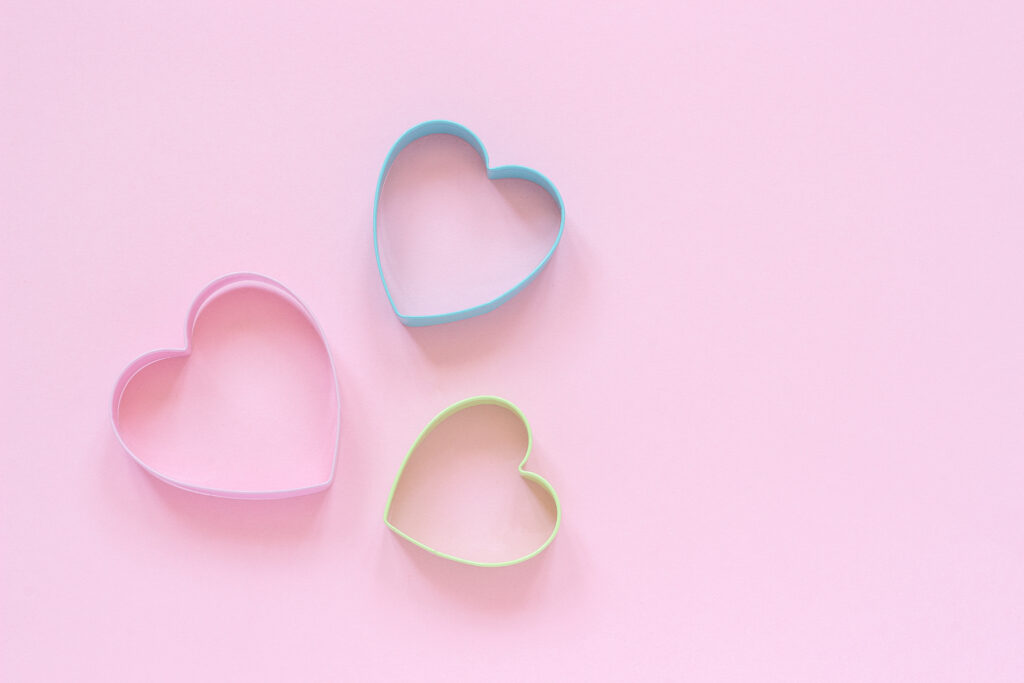

Pros
- Easy to clean- hello dishwasher!
- Low maintenance. No worries about rust here!
- Inexpensive
- Light and easy to use.
- Ideal for kids-no sharp edges.
Cons
- Since the edges are rounded, more intricate shapes are difficult and not as crisp.
Aluminum
Pros
- Inexpensive
- Fairly good at getting crisp details
Cons
- Maintenance intensive- very prone to rust
Stainless Steel
Pros
- Durable
- Good for detail cutting
Cons
- Can rust but not as easily as some others on the list
Copper
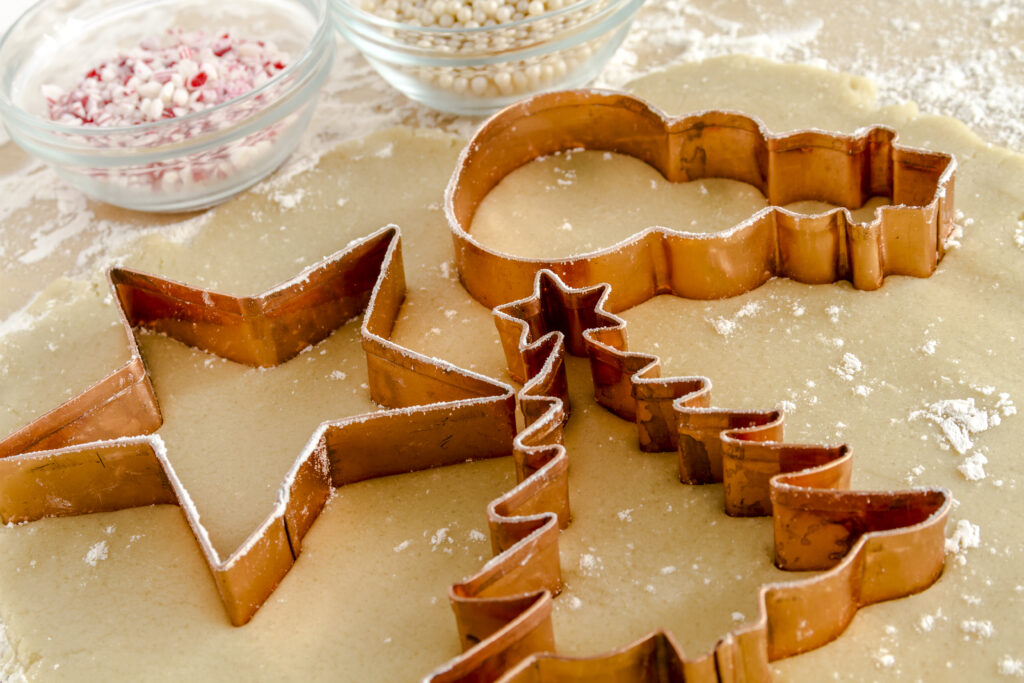

Pros
- Well-made and durable (think keep and give to your kids as heirlooms)
Cons
- Expensive
- Maintenance intensive-they can tarnish
Tin
Pros
- Inexpensive
- Fairly good at getting crisp details
Cons
- Maintenance intensive- very prone to rust
5 Fun Facts about Cookie Cutters
- The Gingerbread Man is widely considered the first cookie cutter. Gingerbread men date back to the 16th century and Queen Elizabeth I of England.
- Cookie cutters made from tin rose in popularity in the U.S. during the 1800s. This was mainly due to the fact that manufacturers could now mass produce them instead of making each one individually.
- There is a National Cookie Cutter Museum in Joplin, Missouri.
- There is an official Cookie Cutter Collectors Club that began in 1971. A one-year membership will only set you back $25.
- The first week of December is National Cookie Cutter Week! Who else plans to celebrate this year?!?





